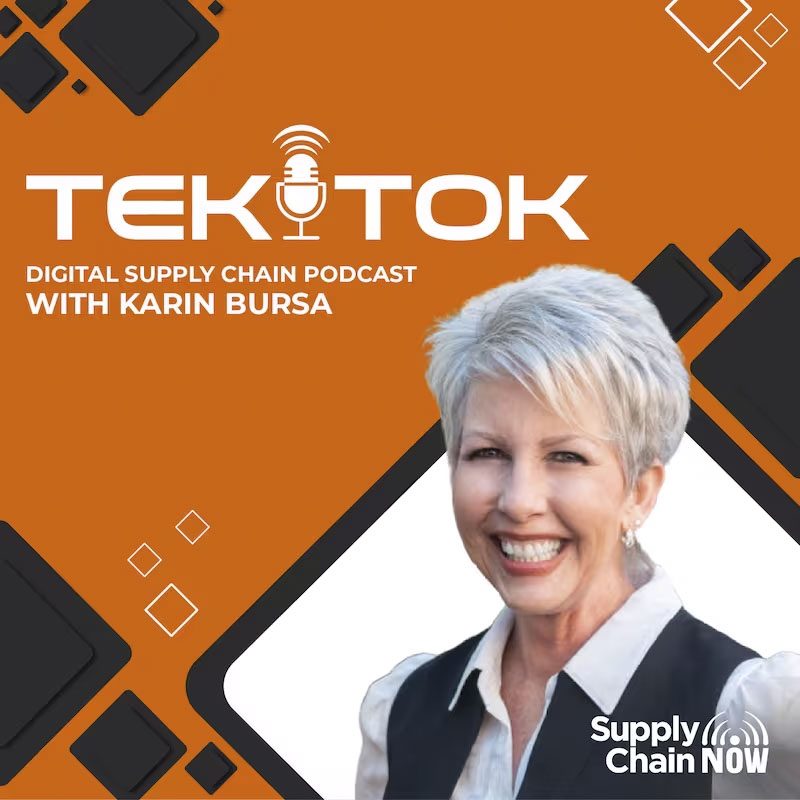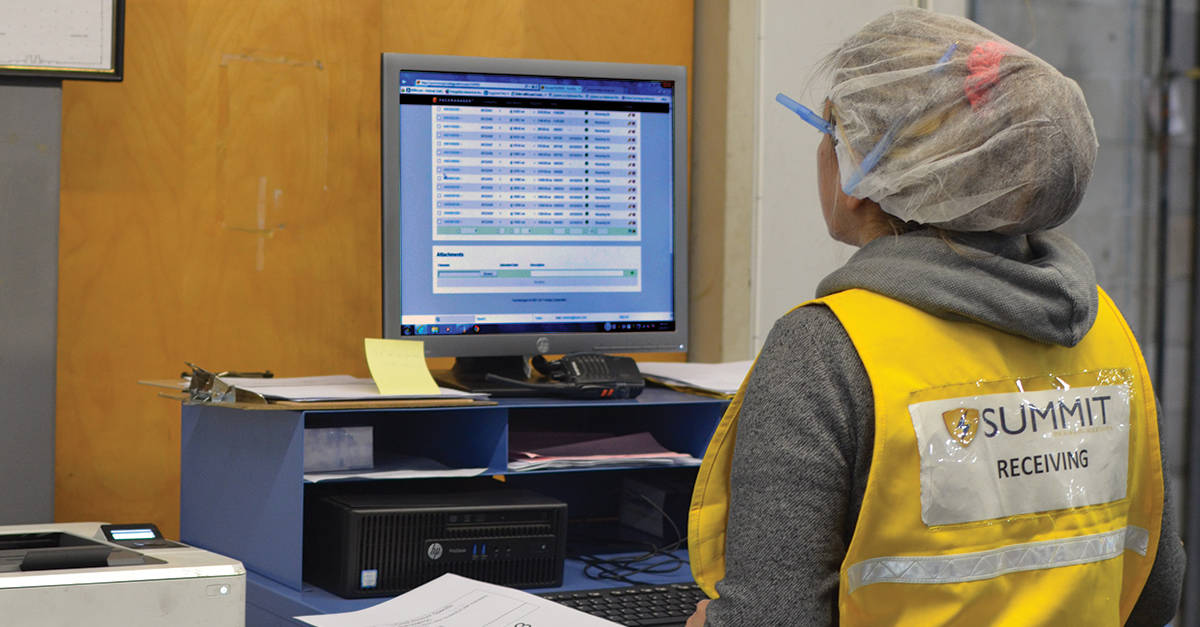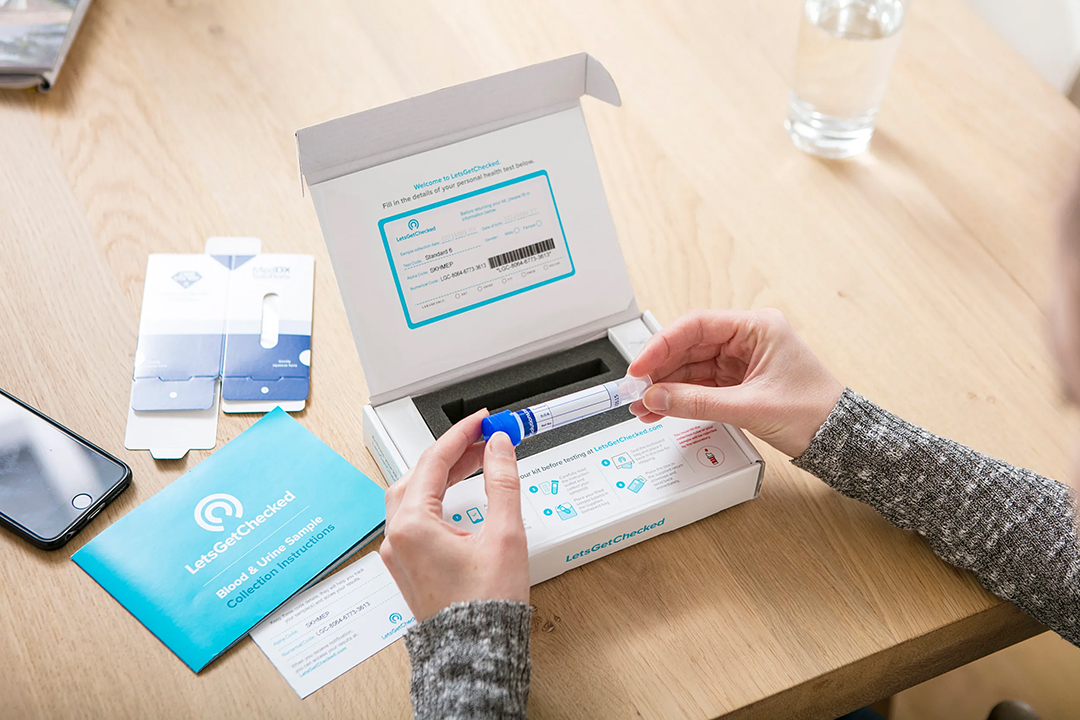In this episode of TEKTOK, powered by Supply Chain Now, host Karin Bursa welcomes Jason Tham with Nulogy to the podcast.
Featured Guest
Jason Tham is the CEO and co-founder of Nulogy, a globally recognized software company that connects consumer brands with their external suppliers to bring customized consumer products to market with agility. As the heartbeat and driving force behind Nulogy, Jason spearheads the company’s strategic direction and product vision. For over a decade, Jason has championed the advancement of agile, interconnected, sustainable supply chains. As a distinguished thought leader, he has presented his vision and strategies at industry conferences around the world and serves on several industry association boards. Nulogy’s technology is used by some of the world’s most recognized brands to enable agility and responsiveness in their supplier networks. By leveraging digitalization through Nulogy to increase supply chain efficiency, responsiveness, and collaboration, brands and their supply chain networks are able to navigate today’s volatile, ever-shifting consumer landscape with flexibility, ease, and speed.

Welcome to TEKTOK Digital Supply Chain Podcast, where we will help you eliminate the noise and focus on the information and inspiration that you need to transform your business, impact, supply chain success, and enable you to replace risky inventory with valuable insights. Join your TEKTOK host, Karin Bursa, the 2020 Supply Chain Pro to Know of the Year. With more than 25 years of supply chain and technology expertise and the scars to prove it, Karin has the heart of a teacher and has helped nearly 1,000 customers transform their businesses and tell their success stories. Join the conversation, share your insights, and learn how to harness technology innovations to drive tangible business results. Buckle up, it’s time for TEKTOK, powered by Supply Chain Now.
Karin Bursa (01:13):
Okay. Welcome, Supply Chain movers and shakers. Karin Bursa here. And I am so glad that you are with us today for this episode of TEKTOK, a digital supply chain planning podcast. We are going to dive into a really important topic today. We’re going to talk about your supply chain, of course, but we’re going to talk about determining if your supply chain is agile or fragile. And you know, it’s an understatement to say that we’ve been living in interesting times, really unprecedented times. And we seem to have really entered a period of perpetual volatility. And as such, agility, flexibility, the ability to sense and respond and make changes that are meaningful for our business have never been so important. Long gone are the days where predictable consumer demand and dedicated retail channels made planning easy. I know it didn’t feel easy at the time, but it certainly was easier than it is today.
Karin Bursa (02:18):
Today, we’ve got challenges of changing channel mixes. We’ve got product portfolio changes. And you know what? It’s hard for brands that have been well-established to really retain and grow market share. Competition is fiercer than ever. So, addressing and understanding your own supply chain agility, your own flexibility, it can’t stop at your four walls. You’ve got to reach out and assess the agility that you have, the levers you can pull, by looking at your network. That network includes your suppliers, your customers, your transportation partners, your manufacturing partners, co-packers, your distribution network. The list could go on and on. So, as you look at your agility, look at your own operations, but then look out broader. Look at the way that you rely on trading partners to bring your products to market and to serve your customers well. And assess if they’re enabling your brand to pivot and respond quickly, or if they’re hindering your ability to be more responsive in the marketplace. And diving into this topic today with me is Jason Tham. And Jason is the CEO of a company called Nulogy. Jason, welcome so much. It’s great to have you here on TEKTOK.
Jason Tham (03:50):
I’m very glad to be here, Karin. Thanks for having me.
Karin Bursa (03:54):
Yeah. Absolutely. Clearly, Nulogy has a point of view here around gaining agility in the marketplace. In fact, I’ve got to tell you that I read a white paper that was produced by your team, and it was called Why Your Supply Chain Is Brittle? And it really got me thinking about this theme of am I fragile or am I agile? And so, kudos to your team. You gave me some good things to think about. Jason, would it be okay if we made that available in the show notes so that our listeners could download it?
Jason Tham (04:29):
Absolutely. Absolutely. I’m very excited to talk about the subject because it’s obviously near and dear to me. And as you said, the whole pandemic has highlighted the importance of understanding agile and fragile supply chains.
Karin Bursa (04:41):
Absolutely. Absolutely. You know, before we dive into that topic – and I know you and I could go on for hours around this topic – let’s get to know you just a little bit. Let’s introduce you to our audience. Give me just a little bit of information about yourself.
Jason Tham (04:57):
My background is – thanks for asking – I co-founded Nulogy over 15 years ago. But if I think back, the actual story of Nulogy dated before that. Because my background is in consumer packaged goods and supply chain, so I worked in a very large consumer packaged goods company. You’re probably familiar with Kellogg’s. I worked in manufacturing. And then, after that, I worked in contract manufacturing as well. And that sort of exposed me and sort of was a genesis of understanding the problems between in the supply chain and the bullwhip effect, and how brands were doing what they do best, which is branding. And more and more contract manufacturers, contract packagers could add value and bring the community together between brands and manufacturers. There’s a whole set of challenges and opportunities. So, my background’s been in CPG, then founding the company to help solve for some of these problems that are in the supply chain.
Karin Bursa (05:52):
Great. So, that tells us a lot about you. It gives us a little bit of a feel for Nulogy and some of the problems that you solved. But tell us just a little more, maybe some of the companies or an example of a problem that you can help a company solve with Nulogy.
Jason Tham (06:08):
Yeah. At Nulogy, we are a technology company, it has solved the problem in a very specialized way between a brand and a contract manufacturer. So, if you take some of our customers – like Proctor and Gamble, L’Oreal, Church and Dwight, Amar’s, a lot of food beverage, a lot of healthcare and beauty products, and also other wellness products in the pharmaceutical space – more and more a brand must interact, transact, and collaborate with its external supply chain partners, whether it be a contract manufacturer, a packager, a 3PL, to be able to launch that product. That means, plan for, make that product, package, and distribute that product. And that set of interactions is really what we specialize to bring together through a platform or frictionless way of collaborating to synchronize the information flow to be able to launch those products better.
Karin Bursa (07:12):
So, I love a lot of things you just said, and I want to dive into that in just a moment. But before we get started, just a little context. So, am I to understand that Nulogy can compliment what my ERP system does, or what my supply chain planning system does, or does this replace those capabilities?
Jason Tham (07:29):
Our vision in the beginning was to really not be the ERP. It was to compliment the ERP. And ERP is in the name, it’s Enterprise Resource Planning, it’s your enterprise. But what happens outside your enterprise? All a set of interactions that occur. So, they have an ecosystem effectively of suppliers, and customers, and contract manufacturers, and packagers, and third party logistics companies. And those third party logistics companies and third party manufacturers have also customers. So, how do you interact? How do you transact? How do you bring all that information together? And that’s our focus. We very much compliment the ERPs.
Karin Bursa (08:12):
Right. So, that makes a lot of sense to me. And for our audience out there, it’s the opportunity to reach out and really accelerate that information flow. And we’re going to talk about that in a little more detail as we dive into this topic of becoming more agile in the marketplace or reducing the fragility of your supply chain. On that topic, we find that many companies have established their supply chain network. It’s really been built on, Jason, what I would refer to as a very rigid infrastructure. It’s been based off of doing things like large lot sizes, standard product offerings. And it really hinders our ability to flex, right? To increase with demand or to decrease or repurpose production assets to produce a new set of products. Or accommodate a change in mix or packaging that might be important.
Karin Bursa (09:09):
And those things have been increasingly important in this time where channels have changed so significantly, where I’m getting stuff delivered at home versus going to the store and doing a purchase. You know, we can deliver supply chains that are predictable, right? Supply chain likes predictability. It likes routine. But it gets really challenging when we try to introduce new things and do it quickly. So, fragile means I can’t do that. I can’t sense. I can’t respond. I can’t repackage. What are you seeing in this area of some kind of examples, if you will, of fragile attributes of businesses? And maybe where companies should look at its own capabilities.
Jason Tham (09:56):
So, doing one thing over and over is infinitely easier than doing one thing once or only maybe a few times. So, the ability to be able to launch different types of products and be more resilient to different changes in the environment is all throughout this concept of agility. And the pandemic has certainly highlighted what now is a household name, supply chain. I think of my kids, and in the beginning of the onset of the pandemic when you couldn’t get paper towels, it’s supply chain. So, now, anytime they can’t get something, they chalk it up to like, “Oh, it must be a supply chain issue.” But really the supply chain issue boils down to the fact that you have these fragile supply chains, and sometimes the supply chains can break. And that does result in a household like mine or yours or any consumer of not getting what they expected to get. That result of a fragile supply chain can be outages, and that’s been revealed really this past year with the pandemic.
Jason Tham (11:03):
Everything that you and I consume as humans has the supply chain, from harvesting a resource, to converting that, manufacturing it, packaging it, distributing it. So, there’s a whole set of kind of breaks that can occur within the supply chain along that journey from that resource to that finished good. So, when I think of fragile supply chains, it’s not the ones that are able to take impacts. It’s when they’re under stress, they break. Agile ones are the ones that can accommodate for disruptions. Agile ones are the ones that can take that stress. And there’s a relationship between agile supply chains and fit supply chains as well. If you think of your body, you know, we’re asked to be more physically fit, and that means trusting your body, but thinking long-term. And fragile supply chains thinks very short-term. They’re like, “What can I do in the next quarter or the next year?” And not looking at investing in the long-term, which is what agile supply chains are really focused on. That long-term view of, like, there might be a black swan event. There might be some disruption. So, I have to invest to be fit, to be agile, to be able to take on stresses and disruptions that may occur, so that we don’t have outages of paper towel, or soap, or whatever it may be, if such disruptions do occur.
Karin Bursa (12:32):
Yeah. You know, I have a really funny story about the paper towels or toilet tissue. Back on the onset of COVID and the shortage of paper towels and toilet paper, et cetera, my son ordered toilet paper online. And this is a perfect example of mixed. He paid no attention to the size or shape. He just ordered toilet paper. He got a 40 pound box of industrial toilet paper. The big rolls, the really big rolls of toilet paper. But that’s a great example of mixed, right? The manufacturing type, what lines produce those big industrial roles versus what we, as consumers, would use at home. And so, that ability to move and to flex by capacity type, or end item, and package appropriately is a very different conversation and a point that many companies found themselves pivoting on in very short order with the disruptions that have occurred. So, I always think of that when I hear somebody talk about, you know, the paper towels or the toilet paper. The big joke for awhile was, he now has a year supply of industrial toilet tissue, if anybody needs that. So, just a kind of a funny story there.
Karin Bursa (13:55):
Jason, when we think about supply chains – and you’ve been in the supply chain industry, you’ve now seen it from a brand perspective, from a co-packer or a co-manufacturer perspective as well – maybe you could tell our audience, they may not be as familiar with the term co-packer or the term co-manufacturer, can you give us just a basic understanding of what that means in the context of a supply chain?
Jason Tham (14:22):
A co-packer or co-manufacturer are really a strategic partner to any brand that is making or launching a new product. And they can play in various parts within the supply chain. In the actual formulation in making that finished good right through to some customization or end channel to provide it, not only through retail, but through some e-commerce. And I would say, you know, it’s a tremendously fast growing industry. If you turn on any kind of a Shark Tank episode, if you look at even some of the smaller brands today that are launched just through an idea. And one of the Sharks, Mark Cuban asked, “How are you launching this product?” They’ll blurt out the word co-packer or contract manufacturer, because they’re a critical point of make, planning, and also delivering this product on behalf of the brand. Which means they must have the good will, the compliance, the traceability, and the constraints that any brand would have if they’re ever making it themselves. And the brand gets the advantage of getting a speed to market often at times. And, also, sharing resources of production line that otherwise would have to be committed to only themselves. So, that’s the role of a contract manufacturer and packager.
Karin Bursa (15:42):
I think that’s really important. So, it becomes this lever that a brand can use or a business can use. Actually, in the industry, we will see that there are brands in the marketplace that don’t own any production assets whatsoever. Their product is completely produced through a network of manufacturing partners or completely sourced as end items and brought in. So, these levers, this ability to increase or decrease and respond to market changes becomes increasingly important.
Karin Bursa (16:15):
Now, Jason, I can see the value proposition there, right? I don’t have to own the production facility. I don’t have to worry about managing a production team that runs, you know, three shifts a day. And I can rely on the expertise of others to do that to my specifications. So, that becomes a very quick and easy way for a business to gain flexibility or presence in the marketplace. But to do that, I’ve got to coordinate, not just what’s happening in my company proper within my proverbial four walls, but how they’re performing against my needs. So, that’s really where Nulogy starts to come into the equation. So, give us a feel for how Nulogy is able to really accelerate that flow of information, that prioritization, and even doing things like maintaining good quality specifications.
Jason Tham (17:15):
Yes. So, you described it exactly almost what Adam Smith said, is that, organizations, if they can specialize and work together is what will actually create a more prosperous nation. So, what we’re seeing is brands specializing in branding, contract manufacturer specializing in contract manufacturing. But there’s a whole set of activities that occur to be able to make, package, and distribute that product. And what Nulogy focuses on is enabling that brand. And I do believe the future belongs to brands who can leverage their external manufacturing and packaging supply chains to make their products faster, more agile, safer, and with less waste. And to do that, there’s a set of even recipes, bill of materials, traceability requirements from a lot perspective, such that when they’re making a product externally – not on one of their own plans – they have the assurance, the guarantee of outcomes, the recall capabilities, the whole traceability genealogy of making that finished good like it’s at their own and that visibility as well.
Jason Tham (18:26):
Likewise, a contract manufacturer who is making a product on behalf of that brand can do so with the upstream visibility of the forecast and collaborate on any changes, whether it be the purchase order, and pre-qualify them to be compliant to that brand specifications in that finished good make. So, I think there’s a whole sort of mutuality that occurs there. And often, this is a set of back and forth information that is passed. But now with the Cloud, it’s like the perfect forum really to collaborate, bring together a set of data and information, so that everyone’s working on a common set of truth that reduces sort of the bullwhip effect that we all know in supply chain as well. So, that’s what Nulogy really focused on, bring the community together, synchronize that information, driving mutuality, allowing the brand to be more effective and efficient. And, also, the contract manufacturer, packager, 3PL to have the most updated information, pre-qualified, and also to be able to serve that brand with speed and grace.
Karin Bursa (19:31):
Yeah. So, I love that for a couple of reasons. One, I like to look at techniques that can help us accelerate time to market. Can we get there faster and with less risk? Secondly – our listeners here on TEKTOK will hear me say this time and time again – but I want to replace risky inventory with valuable information. It stores better. It moves faster. And it helps me to align my business around the most current demand signals in the marketplace. So, I love that you’re bringing that aspect together.
Karin Bursa (20:05):
Now, one thing many of our listeners may not realize is that even within brands, within some of these large multinational brands, many of them have grown through acquisition. So, I was in a conversation with a CSCO for very large brand before COVID hit. And he turned to me and said, “Look, my company has 42 different ERP systems.” So, if I tell you, I’m not integrated into myself, much less have challenges bringing supplier information in, bringing customer information in, and they can do that. But it’s responding in a consistent manner and measuring the business in a consistent manner across each and every brand and each and every go-to market team. And I think that that’s a real opportunity for the marketplace to gain more agility. I need to build confidence and trust in that data and the signals that my business is responding to. So, when you talk about, you know, where Nulogy can help to boost agility, it’s not just data transfer, right? It’s gaining insights from that data. So, tell me a little bit about that.
Jason Tham (21:27):
Yeah. So, how can one embrace variability in the market to compete on velocity, that’s what we’re talking about. So, the data that one can leverage is understanding where is capacity available. Because if I want to be a fast follower with a new category of product that might be launched, how do I find that within an external network to be able to launch that? One of our customers is Church and Dwight, and I think that they’re one of the better performing publicly traded CPG companies, because they have a very clear strategy to be asset lean, asset light, and they can launch products very rapidly through that. And how does any brand assemble, disassemble, or reassemble a network of suppliers to be able to respond to that demand to make a product? Because a customer retailer may say, “I have some space for some end cap displays. Can you make this?” Well, the brand who can say “I can make this in this manner to fill this up” is going to win. So that the real ability to embrace that variability to compete on velocity is absolutely key.
Jason Tham (22:47):
You also brought up, Karin, you said that I might do work with a manufacturer for a certain period of time. A trend might change. I might have to launch something new. And I would bring up the concept of temporary permits. So, how can I temporarily do work, but guarantee an outcome irrespective of who I do work with? So, if I have you said the 42 ERPs in a single CPG –
Karin Bursa (23:15):
Is that crazy? That’s crazy, I know.
Jason Tham (23:17):
I’m not surprised to hear that. And I think the whole chasing is going to be one ERP for everything. I’m not sure about that anyways. But if you think of the external, there’s a heterogeneous set of suppliers, heterogeneous set of systems. How do I bring homogeneity to that? At least at our company, Nulogy, we take a platform approach to bring homogeneity to those very vast sets of data flows to be able to bring homogeneity. So, you can bring a set of guaranteed outcomes because they are permanently connected to your platform. But only maybe do business within three or four months of the year versus forevermore, because nothing today is forever, because forever is a long time.
Karin Bursa (24:07):
Yeah. Yeah. So, I think, again, you said several important things in there. First thing is that, many businesses are highly seasonal or have product offerings that are highly seasonal. That’s a great opportunity to leverage some manufacturing partners or co-packers and distribution partners in the mix to handle those highly seasonal items. Secondly, you mentioned just a moment ago, about new product introductions. And this is an area where working with a manufacturing partner or a co-packer can really add significant value, right? If you have production assets of your own, you may want to do steady state with those, and use your partners to do a new product intro, and to be able to test – if you will test -market those products, and see what kind of traction they get in the marketplace. Because the bottom line is, more than 50 percent of new products fail, right? So, many of those CPG companies want to produce, distribute, do some test marketing, understand what that looks like, and then they’ll talk about the long-term plan or the long term best strategy. So, that’s important.
Karin Bursa (25:23):
And then, finally, when these CPG brands, when you think of things at grocery, for example, if those products are on promotion, we can see tremendous spikes in demand. You know, 300 percent during that promotion period. Likewise, if our competitor is on promotion, we may see our demand suppressed during those periods of time. So, having production partners that can help us to flex and increase more as we go in promotion in certain regions or in certain channels. And then, to be able to ramp down during times when we’re in a normal demand pattern. You know, that’s pretty important as well when we think about ways to add agility in how we go to market.
Jason Tham (26:14):
Yeah. Five years ago, we knew that e-commerce and the effect of commerce through these promotional campaigns had an effect. But you wouldn’t have thought, like, episodic commerce, you could almost sell out a product before you even make it. So, those spikes of 300, 400 percent are real even in the fast moving consumer goods category. And when you mentioned these large national brands, how they’re growing is through new product introduction. But even more upstream, they’re sometimes investing in an idea. You hear about a Kraft or a Nestle recently buying a food kitting business, or they bought Bountiful on the vitamin side this past week. That health trend, they want to make sure that they get a piece of that and the largest food company kind of makes sense. So, how do they leverage now their distribution channels, their network, with this new sort of product mix that they can also have vitamins, say in this example, which is growing in the health category, for sure. So, there’s numerous amount of examples in the market right now that, I think, is very exciting to be in supply chain to enable brands and contract manufacturers to capitalize on, for sure.
Karin Bursa (27:37):
So, you hit on another topic that I think is important as well. If I’m a brand in the marketplace, a large consumer brand, my consumers have a very specific expectation of my product, a specific performance criteria. If it’s food and beverage, specific taste criteria, a specific packaging that they’ve become accustomed to as well. So, communicating and tracking these standards when you’re working with trading partners, when you’re working with a co-manufacturer or manufacturing partner, or somebody who’s doing some late stage postponement for me on how it’s packaged and sent to the consumer, to the retail location, that brand equity is really important. So, how does Nulogy kind of help to reinforce those guidelines?
Jason Tham (28:30):
Yes. So, Nulogy today plays in over 50 percent of the customers who are serving food and beverage. So, there is compliance requirements from a food just overall governing standpoint there. At the same time, if you’re ingesting a product in the food or even in the pharma side, those companies – like Nestle, I mentioned, like Abbott – some very leading premier brands want to make sure they have very quality products in the hands of the consumers. And those third party manufacturers and packagers are making it or packaging it on their behalf. And what is required there is quality. And quality of that product is making sure that – going back to that perfect order – the right product at the right time, with the right recipe, the right quality specs, and so forth.
Jason Tham (29:21):
And so, how can I make sure that that is up to the standard that is expected, even if it was not made by me but someone else? And Nulogy really brings that and ensures that the third-party manufacturer is compliant. It has all the quality specs in order. The compliance requirements from regulatory perspective as well. And they can share that information readily with their brand to give them the confidence and comfort. And, obviously, today in a virtual world, in the past year, I’ve heard more of our customers now being able to do some virtual audits because they weren’t going — and walk the floors. They can see what is happening in there, if they wish – if they wish. But it really ties in a very deep collaboration between a manufacturer and a brand to work together to make that product at the quality specs and requirements that consumer would want.
Karin Bursa (30:22):
And I think I know the answer to this, but how does it happen today? How is that information communicated when a company doesn’t have Nulogy? Is it spreadsheets and email? I mean, how are they sharing information between trading partners?
Jason Tham (30:40):
Yeah. Today, believe it or not, we talked a bit about the ERP. Everyone has an ERP, Enterprise Resource Planning, but it’s for me. Now, how do I externalize that information, that set of information that’s both static and dynamic that I have to share? So, often, that’s exported by some spreadsheet, maybe some emails, some phone call. And that is continuously shared, but there’s delay [inaudible]. There is potential not the actual truth because of that delay of information as well. And it’s just not effective and efficient to share this information. So, the answer is, whether it be on the shop floor or the back office, a lot of that information is captured through sometimes, believe it or not, paper, pencil.
Karin Bursa (31:26):
Paper. Paper [inaudible].
Jason Tham (31:29):
It is. It is. And we, at Nulogy, take our customers through this 4C journey to digitally transform that external supply chain, capture that information, connect it back in, allow deep collaboration – that’s the third C – and then add cognition or AI intelligence on what’s being captured so that both parties can understand. A concrete example is, when a new product is launched, a first article is approval. That means a contract manufacturer needs to make, maybe, a first run at that product and then share how the product was first made. That means everything from qualitative and quantitative checks, Nulogy can digitalize that whole process and share that information. But then, also approve the process for the first article or first finished good that’s made such that that’s now digitally confirmed. And then, I can actually go into my long-term or my actual production launch. So, just an example thereof being able to give the confidence.
Jason Tham (32:32):
In the past, it’s done some first article, I did all the checks and balances. I filed this away and maybe scan it. I send it to my customer. But capturing this on iPads at the shop floor, being able to share that, get that digitally stamped. Taking a picture of it. Make sure that you actually have all the compliance requirements there before the product is, in fact, put into production.
Karin Bursa (32:57):
So, again, just another great example of accelerating that information flow or reducing the latency. But, also, making sure that as it’s communicated digitally in that format, I don’t have to worry about wasting my human assets on re-keying information. And I don’t have to worry about the introduction of any errors in transposing numbers or statistics or forgetting details around a quality spec or anything in those processes. So, I think that that becomes very important as well. As few times as possible, let me collect it once and then be able to leverage that data for all the intents and purposes where it can add value in the business.
Karin Bursa (33:39):
I think as a part of that, it becomes really important to understand that Nulogy is not just doing data collection, right? You’re interpreting the data or helping to identify where risks may exist, or where sequencing of production may take place, or if I’m meeting my deadlines for customer order fill and on time in full. So, that becomes important as well, right? Because in collaborating amongst trading, partners, amongst a brand and one of it’s manufacturing or co-packers or 3PLs, it becomes important for them to be on the same page and to understand where they are in meeting all of the criteria for the business as well.
Jason Tham (34:23):
Yeah. And you know, if you’re making everything with one party, one may think it’s much easier, which is true. But when there’s multiple parties involved in the make, package, distribute processes, let’s just say, things can go awry. And gain visibility of variance to plan and on time and in full and any exceptions on the various supply, Nulogy surfaces that and can share amongst the parties, “Well, this is where we might be veering off the plan,” whether it be a lack of inventory or just maybe the production process itself in the work process. The working process is off plan. So, that is absolutely some of the exception handling that will be surfaced through Nulogy.
Karin Bursa (35:13):
So, that makes sense to me as well. So, Jason, once I have Nulogy in place, you know, there’s this concept of supplier liquidity, right? Or the ability to move from one supplier to another supplier, or to reduce my risks by having similar suppliers in the marketplace. And I think we go back to the pandemic, this has been a big point that many, many companies have talked about, is, they need to reduce risk by having multiple suppliers in their network, or by doing production closer to the market that those products will serve as well. And for some companies, you know, some of it is, they’ve moved some of their suppliers and manufacturers out of China and into other regions. That might be more about trading relations than anything else. But that ability to flex – right back to this conversation of agility and being rigid or fragile in your business – the ability to onboard or off-board a supplier in my mix, what does that look like? Like, if I have competency in Nulogy and I’m using it and I want to onboard a new trading partner, how quickly can that happen?
Jason Tham (36:36):
That’s a great question. It can happen literally within weeks. Which, often, in the past, would take months to do and wrought with risk. So, being able to plug and play, so this notion of presence on network – 15 years ago, you’d be like on presence on a network. But with the ability to have a platform approach where you have your suppliers and it’s mutual here – because then a supplier has more access to business as well – gives the ability to onboard, off board, but create more capacity. And I believe that’s why brands today are outsourcing more of their manufacturing and packaging. And it will do more if they can do so in a more frictionless way with less risk. And that’s absolutely what Nulogy enables a brand to do.
Karin Bursa (37:32):
So, you as CEO of Nulogy, I’m sure you’re talking to some of the world’s biggest brands on a regular basis, to the chief supply chain officers or global supply chain officers. When they’re talking to you and they’re engaging with Nulogy, Jason, what are they asking for when they talk about agility, or they talk about market response, or they talk about visibility? What are some of the things that they’re looking to achieve? The outcomes that they’re looking for?
Jason Tham (38:02):
We’re very proud to have a set of wonderful customers, some of the premier brands – as I mentioned, Proctor and Gamble, Mars, one of the largest cosmetics company, L’Oreal – as customers using us for many, many years, that what they want is to be able to have that speed to market, to be able to have agility in launching new products, that really are sometimes customized for that endpoint. Long gone are the days of one product, one fit for one type of geography or demographic. I think proliferation of skews certainly took a pause with the pandemic or shrunk. But I think that if you look at what’s upcoming now, I don’t know if it’s going to be the boom of the 20s, but it’s going to be something, I think, that’s going to explode in terms of the type of variability of products.
Jason Tham (38:54):
The brands that we’re talking to and working with is, how do I launch new products? How do I do so with the highest of quality and respond to the ever-changing trends and demands? Not only the type of product, but the different channels. You wouldn’t have thought that people today could sit back or would have to sit back on their couch and order a bag of chips of Frito-Lay. I mean, that’s what you do today or you had to do last year for sure. And I’ll just say one of the largest chip and snack food companies leveraged us for that regard. And not only just through the retail of the Costco and Walmart, but for the direct to consumer side, where you can effectively go to their website, click on that mix, and they’ll pick the flavors of chips, and get that product delivered. That variability of channel is something that wouldn’t have been thought of probably or accelerated, certainly, because of the pandemic.
Karin Bursa (40:01):
Absolutely. And I think a lot of that variability is here to stay, right? I think that we, as consumers, have changed for the foreseeable future in the way that we order some products or our expectations around that. And let’s say, food and beverage companies need to be able to package for their food services business, which may be in 20 pound packages, than their regular retail or grocery channel, which may be an a pound package. Now, we’re looking at also single serving sizes that might get distributed, as you expressed, right to the consumer at home. So, lots of changes in packaging, those are great packaging examples. But then, also, the channel that those package really travel through. So, back to my son ordering, you know, a 40 pound box of toilet paper. He would never do that again, let’s put it that way. That was a mistake on his part.
Karin Bursa (41:02):
But I think as consumers, we expect to be able to order in the quantity that we want, just when we want it. And by the way, as consumers now, we have an expectation that we may get it same day or within 24 hours or 48 hours as well. So, that’s a different lever of agility as well, where, you know, a 3PL can come into the mix. We can look at distribution center placement as well. And we need that flexibility and how products are packaged and shipped to get to whoever the desired customer is as well. So, lots of great examples.
Karin Bursa (41:38):
For our audience, I’m going to make available this white paper from Nulogy. The white paper is called Why Your Supply Chain Is Brittle? And it really got me thinking about this topic of am I agile or am I fragile, and what can I do? And does that agility come just between, you know, my proverbial four walls or the assets that my company owns? Or can I really harness agility in the marketplace? So that it can do some of the things that Jason Tham has been telling us about today. I can ramp up my production. I can pull it back. I can adapt to seasonality. I can accelerate new product intros.
Karin Bursa (42:19):
Jason, I love what you just shared about new product innovation, because I’m with you. I think there’s a lot of pent up and innovation that’s going to start hitting the market, right? So, the CPG companies haven’t just been sitting back, they’ve been thinking about new products, new flavor profiles, new packaging that’s going to come to the market as well. So, this is a big opportunity to work with trading partners to really gain agility with those introductions in the coming months and years.
Jason Tham (42:48):
It’s an exciting time to be in supply chain and consumer packaged goods. Absolutely, I think so. They’re one of the highlights. Even economy has been a mainstay. But I think it’s about to really take off in a meaningful way here. I’m excited for sure.
Karin Bursa (43:05):
Yeah. I think there’s lots and lots of opportunity. Jason, what final thoughts do you want to leave with our audience today about becoming more agile or perhaps reducing the fragile nature of their supply chains?
Jason Tham (43:18):
I think the greatest opportunity is to get started. You have to get started. It’s always important to continually reassess and refine your digitally enabled strategy within supply chain, but get started. Look at how my network is performing. Or look at mutuality. How can I drive, not only benefits for me, but also my other trading partners? Because I think that’s often sometimes what’s missing. And what is at stake here is the ability to get more freedom of choice, more resilient and agile supply chains, and be able to be more innovative in the eyes of the consumer. Because one has the ability to launch these products through, not only some new category, but also some new channel. So, I think that’s very much the exciting part of what we’re in.
Jason Tham (44:12):
And the time is now. The time is now where everyone’s sort of taking the order on the frontend as sort of installed, I would say. Like, you and I as consumers have access to so much options in the world. It’s delivering and meeting those expectations. So, that’s where, I think, the back end stuff and the mid stuff is where the opportunity for chief supply chain officers and CEOs of companies have to look at.
Karin Bursa (44:38):
All right. Good stuff. Great insights. I want to thank you, Jason Tham, CEO of Nulogy, for joining us here today on TEKTOK. And for our audience, I hope these insights are going to raise your supply chain IQ. I hope we’ve given you a few things to think about. And I want you to go back and look at your business and look for those opportunities to increase your agility or reduce the fragile nature of your current supply chains. On the topic of raising your supply chain IQ, I want you to be sure to check out the many great digital resources that are available to you on supplychainnow.com. And while you’re there, find TEKTOK, that’s T-E-K-T-O-K, and I’d like you to subscribe. You don’t want to miss a single episode. This is Karin Bursa, host of TEKTOK, a digital supply chain podcast. We want to help you eliminate the noise and focus on the information and inspiration you need to transform your business and replace risky inventory with valuable information. We’ll see you next time.








